Okavango Delta
A field guide to one of the most fantastic safari attractions in the world

Botswana is a country in southern Africa known for one of the most spectacular natural phenomena: the Okavango Delta.
The Okavango Delta is the largest inland delta in the world, formed in the Kalahari desert from the water coming from the Okavango River. The swampy wetland gives rise to beautiful landscapes, lush savanna vegetation, and an important presence of wildlife.
This UNESCO World Heritage Site1 attracts more than 2 million tourists from all around the world to Botswana each year, according to the World Data Info2. These curious explorers are primarily interested in investigating the wonders of the Okavango Delta and the amusing wildlife.
I was personally one of them and visited Botswana and the Okavango Delta in August 2022. We stayed in Maun, a city known for being a tourist hotspot, and we went on multiple safari trips to observe wildlife and nature. On this website, I will share some of my findings about Botswana’s wildlife and some tips I got from experienced tour guides that will be useful for any tourist interested in visiting this wonderful site.
1 Information from https://www.botswanatourism.co.bw/explore/okavango-delta
2 Information from https://www.worlddata.info/africa/botswana/tourism.php
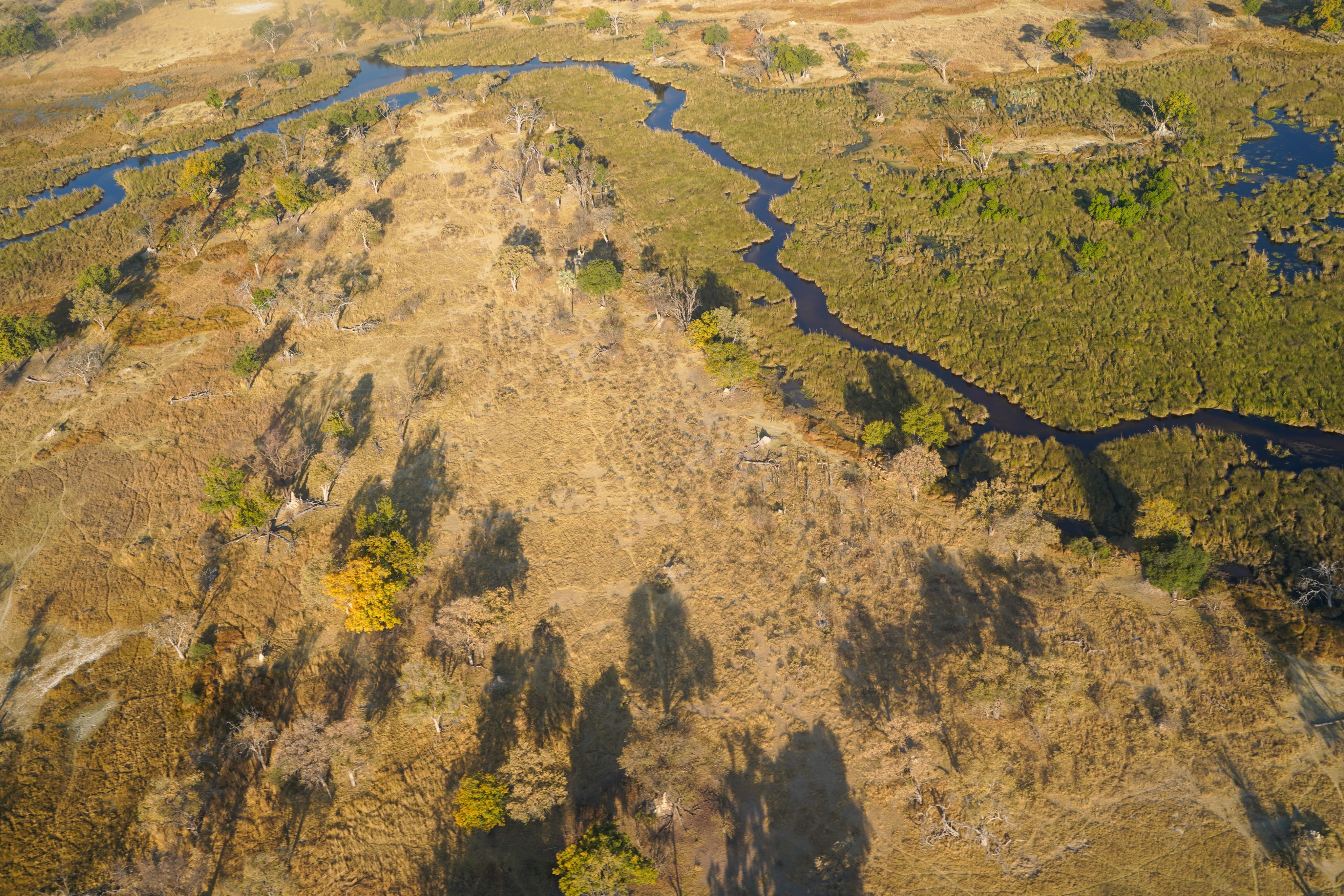

Tips For Tourists In The Okavango Delta
While visiting the Okavango Delta, I got to interview an experienced tour guide and gather tips and suggestions for tourists interested in visiting Botswana and the Okavango. Below are the main questions and answers that could be relevant to an incoming tourist.

Elephant captured drinking water - Image by Niko W
Elephant captured drinking water - Image by Niko W
What is the best time of the year to visit Botswana?
If your goal is to see many animals, the best time to visit is between May and September. If your focus is on birds, then visit between July and October. Just avoid visiting during the rainy season (mid-October and November) and when the temperatures are higher (from November to February) since you won't be able to see as many animals.

Herd of steenbucks seen on a safari - Image from THINK Global School
Herd of steenbucks seen on a safari - Image from THINK Global School
What would be your suggested length of stay in Botswana?
2 weeks is an appropriate length of stay if you want to go to many places and different reserves in the country. If you only had a week to visit Botswana, I would recommend going to the Moremi Game Reserve, Chobe National Park, and the Okavango Delta, and focusing on those 3 experiences.

View of the Okavango Delta from a scenic flight - Image by Niko W
View of the Okavango Delta from a scenic flight - Image by Niko W
What is unique about visiting Botswana?
Unlike other safari attractions in Africa, Botswana's attractions are all natural and true wild, and they also have the unique phenomenon of the Okavango Delta. According to the tour guide, they don't have to push it to promote tourism. Botswana operates in a low volume, high rate tourism model, which means the tourism is more expensive, but at the same time more untouched and unique. Lastly, since hunting is so well regulated in Botswana, they are able to conserve their natural resources better, which can be seen by tourists visiting the country.
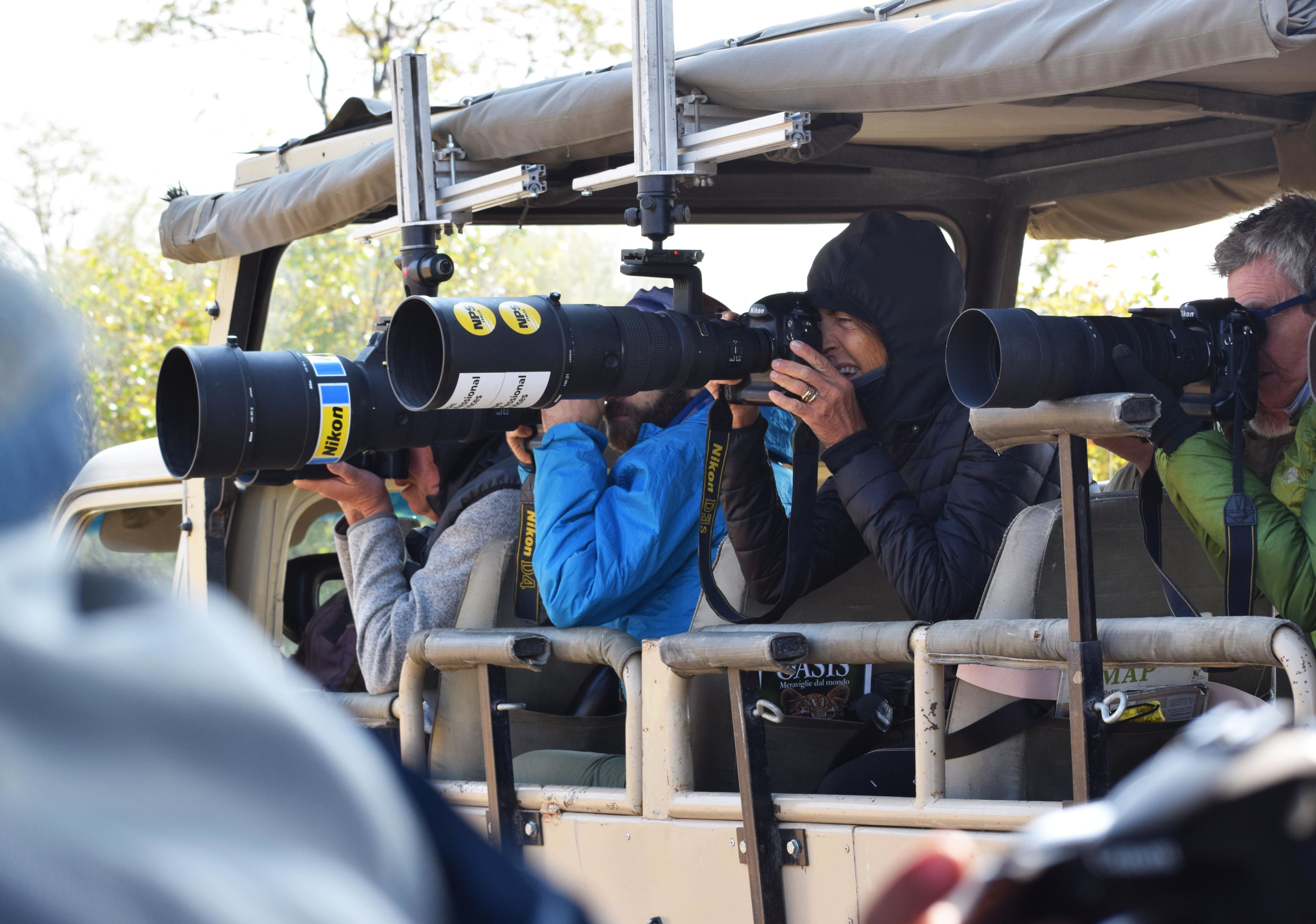
Tourists seen in a safari excursion - Image from THINK Global School
Tourists seen in a safari excursion - Image from THINK Global School
What could tourists expect to see when they come to Botswana?
Tourists can expect to see a big range of animals on safaris, which includes most herbivores, such as giraffes, zebras, steenbucks, and kudus, as well as 'the big 5', which include lions, leopards, rhinos, elephants, and buffalos. Due to the Okavango, aquatic animals such as crocodiles and hippos can also be found. On top of that, tourists will also see many birds and savanna vegetation.

Field Guide For Tourists
Now that we have explored some tourism tips for future tourists, we will go through a field guide and explain a little bit about the animals you are most likely to see and some curiosities about them
Starting off with giraffes, an animal everyone gets excited to see. Giraffes are the tallest mammals and also herbivores. In the region I visited, giraffes commonly fed from Mopani trees and a fun fact is that those trees would liberate a toxin to keep the giraffes away after some time.
All giraffes have horns, but a way to tell males and females apart is by noticing the hair on top of the horns. Males usually don't have any hair, but females will have hair on top of their horns.
We commonly saw giraffes in groups and we especially spotted them early in the morning. Botswana is estimated to have almost 9,000 giraffes3, so this is definitely an animal you will likely see during your safaris in Botswana.
3 Information from https://giraffeconservation.org/wp-content/uploads/2021/10/Botswana-Country-Profile-2021.pdf
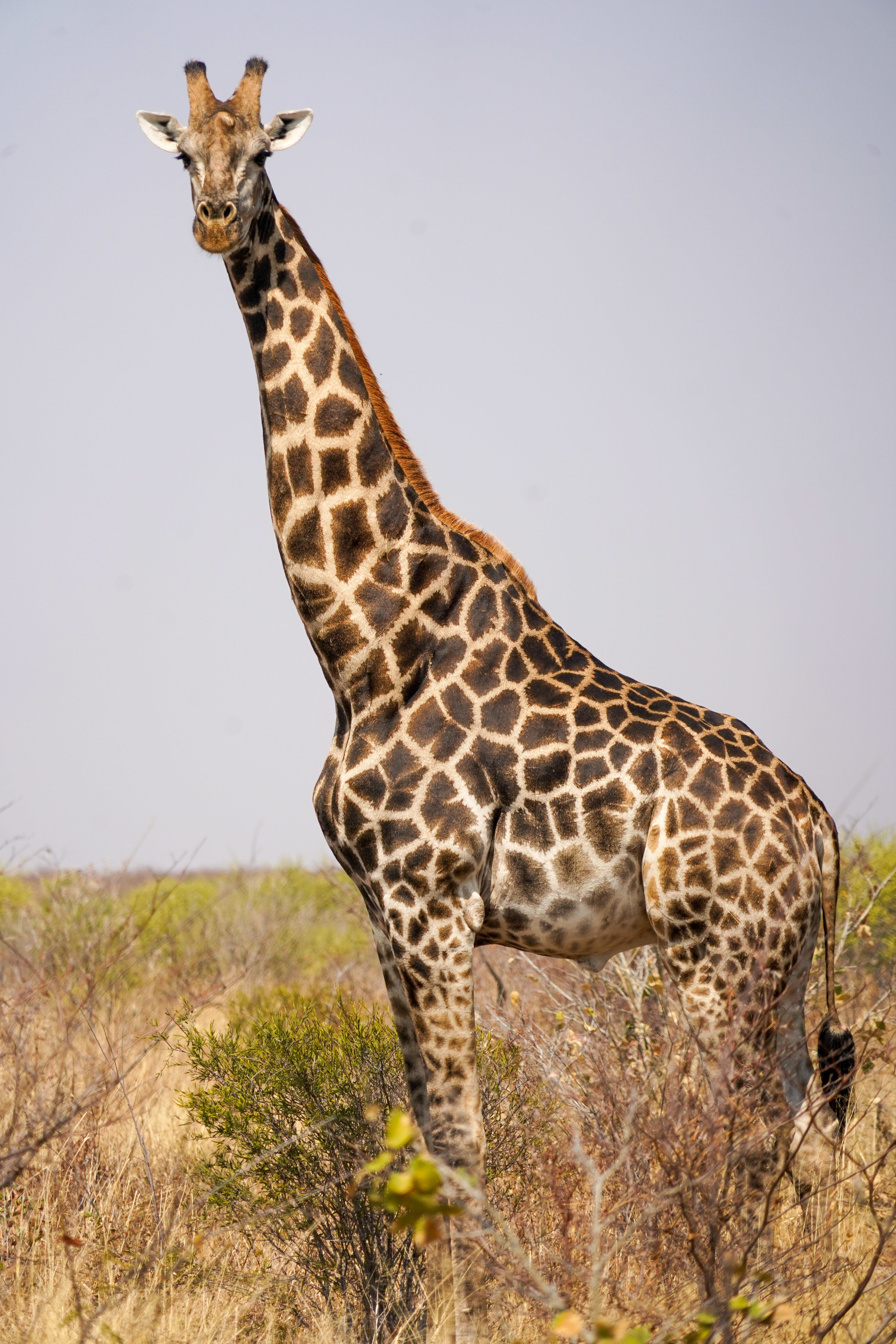
Male giraffe spotted in the Okavango Delta - Image from THINK Global School
Male giraffe spotted in the Okavango Delta - Image from THINK Global School

Zebras are another animal tourists get excited to see. This is another animal we usually saw in groups, sometimes we even saw zebras and giraffes together in the same group.
Zebras are the national animal of Botswana and they were chosen for being considered neutral animals when it comes to tribal symbols and for having their colors represented in the flag of Botswana.4
You will most likely see zebras in Chobe National Park and in the Okavango Delta. Lastly, a fun fact about zebras is that each one of them has unique stripes, which could be associated with the unique fingerprints humans have.
4 Information from http://botswanamission.ch/national-symbols/#:~:text=The%20Zebra%20became%20the%20symbol,racial%20composition%20of%20the%20nation.

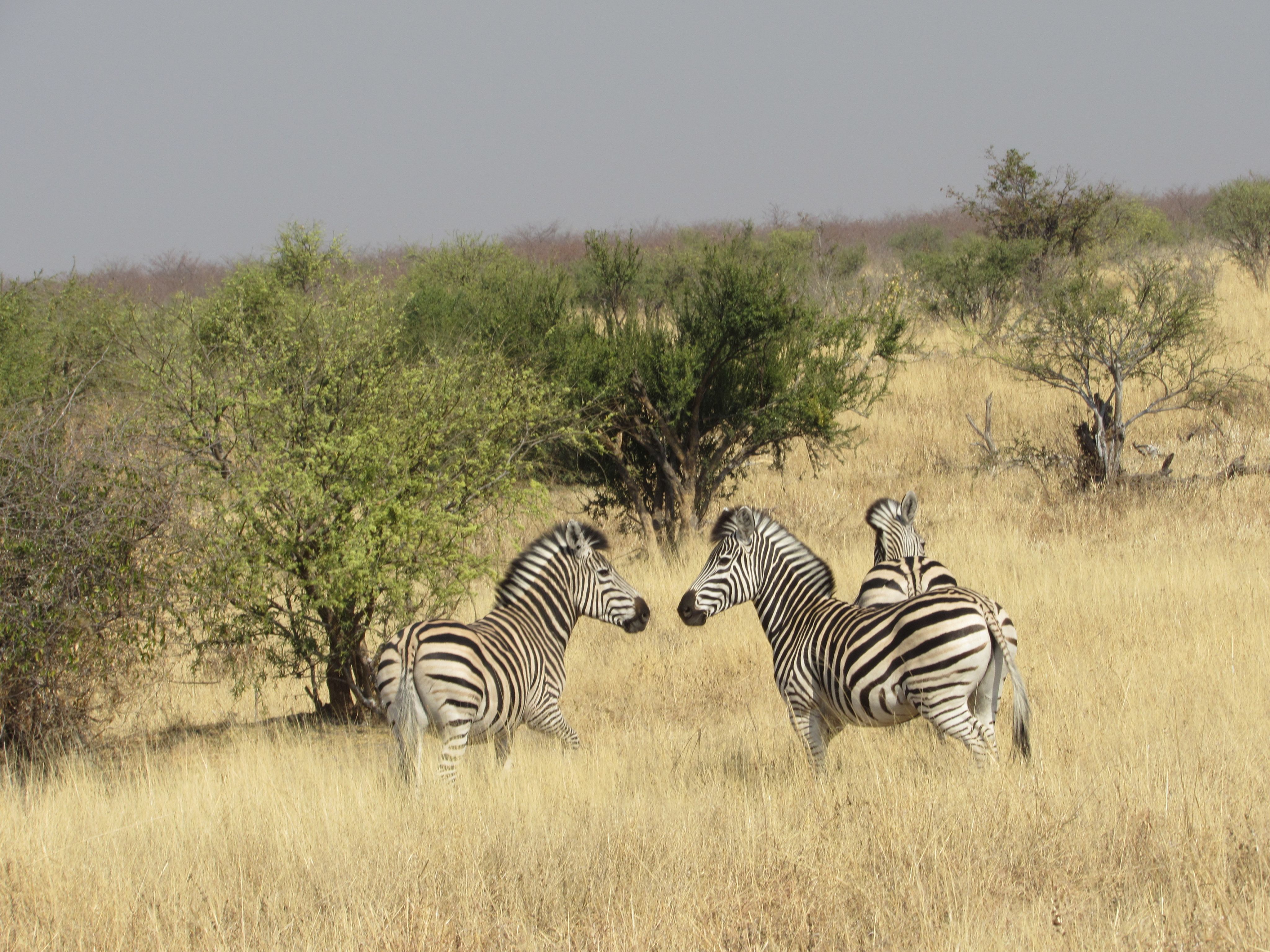
Elephants are one of the most common and controversial animals in Botswana.
According to the African Wildlife Foundation, Botswana has over 130,000 elephants5, being the country with the highest elephant population.
We saw multiple elephants on our safaris in Botswana, both in groups or isolated, and close to the main road or deep into the river. If that is an animal you are excited to see, rest assured you will find them. Just be careful not to wear very bright colors such as orange, red, and yellow, as those can make them a little irritated.
5 Information from https://www.awf.org/country/botswana#:~:text=With%20over%20130%2C000%20elephants%20living,poaching%20continues%20to%20decimate%20populations.
The high number of animals has caused many conflicts between humans and wildlife, as they are known for destroying local crops, harming livestock, and even killing people.
For those reasons, elephant hunting has been a controversial topic in the country. Hunting has been allowed back again since 2019 after being banned in 2013. Botswana's hunting system is unique in the world and extremely controlled with processes being overseen by the government.
Despite the diverging opinions, Botswana makes more than $2.5 million from hunting each year6, so it is undeniable that hunting tourism has boosted the national economy.
6 Information from https://www.voanews.com/a/botswana-earns-2-7-million-from-elephant-hunting/6324550.html

Lions are probably the animals tourists get most excited to see. Known for being the 'king of the jungle', they are the largest carnivores in Africa.
We spent a long time looking for them, and then we finally found two of them sitting by the river. Most of us were expecting to see them in action and being very powerful, however, the reality is that they were very tired and just trying to get some rest.
Fun facts about lions are that they can spend up to 2 weeks without food and that they only live for about 15 years.*
If your goal is to see a lion, make sure to go very early, since they tend to go more into the wilderness to hide from the sun once the sun starts to come out.
My advice for future tourists is that if you are excited to see a lion, don't create expectations about seeing them in action, but do expect to see a beautiful and imponent animal if you are lucky enough to.
* Information from a specialist tour guide from Botswana

Bonus Animal Spotlight
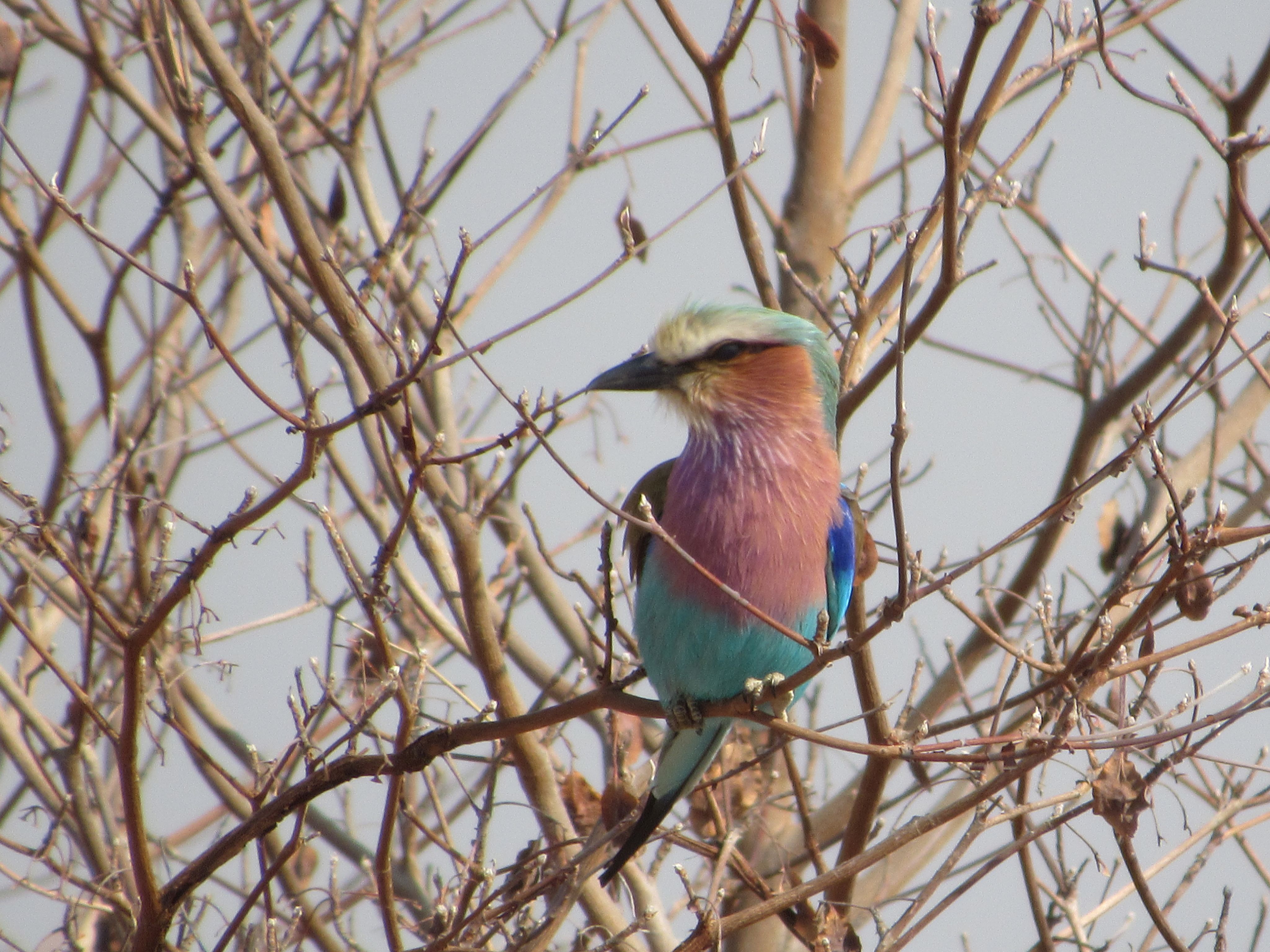
Lilac-breasted roller spotted in August in Botswana
Lilac-breasted roller spotted in August in Botswana
Lilac-breasted roller
When I came to Botswana, I wasn't expecting to see so many beautiful birds, but to my surprise, I was amazed by the more than 40 types of birds I saw on the safaris.
Although I saw multiple breath-taking birds, the one that caught my attention was the lilac-breasted roller. You can spot this bird's vibrant lilac and blue colors from a distance, especially if they are flying and displaying their amusing blue wings. Moreover, they can usually be found in dry savanna and open woodland

Thank you for reading
I hope this guide was helpful to help you prepare you for yout trip in Botswana and to know what to expect while you are visiting.
Ke a leboga!





Image of the savanna from August, 2022
Image of the savanna from August, 2022

Ducks in the Okavango Delta - Image from THINK Global School
Ducks in the Okavango Delta - Image from THINK Global School

Elephant in the Okavango Delta - Image from THINK Global School
Elephant in the Okavango Delta - Image from THINK Global School
